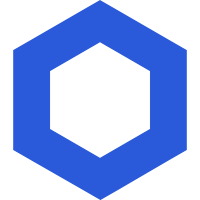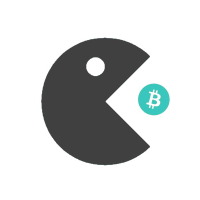Chainlink

Chainlink Chart
The Deeper Dive
The key is in the name. Chainlink is a system that links crypto platforms like Ethereum and Polkadot to real world data, events and payments, so that programs can make decisions based on trends and numbers from outside of the platform. An example could be weather information or stock prices. It’s an interesting blockchain project. Read our “What is Filecoin?” article for another system that sits outside of the pure cryptocurrency space yet is using blockchain technology.
You can think of Chainlink as a bridge between the smart contracts that run on top of some blockchains (which make decisions based on events, widespread in Ethereum for example) and real world information. Blockchains cannot access information outside of their network, so “oracles” are required to feed in external information into the system.
Those Smart Contracts Again
In case you haven’t come across the concept before, smart contracts are digital agreements that run in a layer on top of the blockchain that are programmed to switch into action if and when certain conditions are met. Read our “What is Ethereum?” article for an even deeper dive.
Providers on Chainlink, known as Oracles or data providers, are rewarded for supplying external information (from APIs for example) with LINK tokens. Users that want to pull in off-chain data send a request or contract to the Chainlink network. These contracts will match the request with the relevant oracle that will supply the real world data. It’s a decentralised way of pulling in information.
Chainlink was built by co-founders Sergey Nazarov and Steve Ellis. The Chainlink network is run by SmartContract. Ari Juels is an advisor to the company.
There are 1 Billion LINK
They launched an ICO in September 2017 and raised $32 million through the sale of 35% of the 1 billion unit supply of LINK. Then 30% were distributed to the SmartContract company to develop the Chainlink blockchain and 35% was reserved to incentivize the node operators.
To ensure high quality information, Chainlink runs a reputation system. Larger contracts are awarded to nodes that have a large amount of LINK under a trust system. If nodes deliver false information, they will have tokens deducted. Every oracle within Chainlink network is incentivized to provide accurate data in this way. Each oracle has a running reputation score. When the nodes provide useful information, they receive their LINK rewards.
If Chainlink can continue to prove that it can solve key problems for smart contract users, it will become an essential gateway between different blockchains and with real-world applications.
Pros and Cons
How Does Chainlink Work?
To help data sharing between users and external data sources, Chainlink splits its work into three areas.
Oracle Selection – Chainlink users produce an SLA (service-level agreement) that details the data that they require. Chainlink then matches the users with the best oracles. The user logs the SLA and deposits a LINK payment in the system which accepts bids from best matched oracles.
Data Reporting – the oracles pull the real world data from external sources, process it and sent the information back to the Chainlink blockchain.
Result Aggregation – finally, the results are collected and returned to an Aggregation contract. The Aggregation contract checks the validity of each reply and scores the oracles.
Why Buy Chainlink?
Chainlink solves a real problem on blockchains like Ethereum and Polkadot. There is no point running clever smart contracts on their system unless they have accurate information to act on. The decisions that are being made are only so good as the information that is used, and Chainlink manages this in a decentralised way, with a strong validation system.
They are the biggest operator in this field, and so far have first mover advantage. If you believe in the success of Ethereum and Polkadot, it is not a massive leap to believe in the success of Chainlink. There is an upside too, if more platforms integrate their system.
The risk is that these platforms decide to develop their own method of pulling in real world data, something that Cardano seems to be doing. However, there is a good argument that says this is best done by a specialist.
FAQs
Summary
Chainlink has so far been able to execute its plan and has expanded beyond Ethereum (ETH) to other platforms. Polkadot, for example, became the first blockchain outside of Ethereum to integrate Chainlink.
